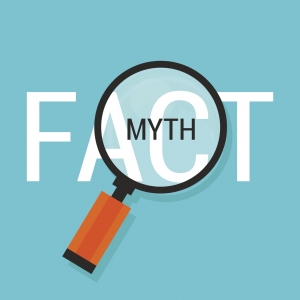Join our online community and be inspired to achieve your goals!
VIEW OUR FACEBOOK PAGEBusted: common recruitment myths

MYTH: You should apply for as many jobs as possible
FACT: While broadening your horizons is often a good thing, we believe quality is more important than quantity when it comes to the jobs you go for. Applying for some well-chosen roles and tailoring your application to ensure you hit the mark for each one will most likely give you better results in the long run.
MYTH: You won’t get the job without experience
FACT: There are many exceptions to this, so don’t let that belief hold you back. If you demonstrate the right attitude and transferable skills, you may have a shot. Think about existing skills and achievements that make you an asset. Network with people you’d like to work for or with and attend relevant industry events. Companies really value cultural fit these days so show the employer what you have to offer, using passion and commitment to make up for your lack of experience.
MYTH: Your resume needs a unique design
FACT: This can actually be a hindrance. In most cases, an elaborate or unusual design isn’t a good idea since it can detract from your message and make it harder for a recruiter to find what they’re looking for. (The exception may be if you’re in a creative industry). The content you include is more important than design, although it must look professional, of course. It’s best to stick with a clean, simple style with a conventional layout. Aim for a contemporary design that attracts the recruiter’s eye without overwhelming or polarising.
MYTH: Your resume must be no more than one or two pages
FACT: Keeping your resume too short can mean you don’t effectively showcase your capabilities. We recommend three to five pages depending on your role, industry and seniority unless otherwise specified in the job ad. Some countries such as the US and Canada prefer shorter resumes so make sure you adjust the length accordingly.
MYTH: You shouldn’t apply for a job unless you meet all the requirements
FACT: We often recommend to clients that they apply for jobs where they meet at least 80% of the requirements. Only applying for roles where you have all of the experience and qualifications stated may limit your chances for growth and development. Plus an employer isn’t necessarily looking for someone who’s done the exact same role before – rather, they want someone who they believe can do a great job now and into the future.
MYTH: You don’t need a cover letter
FACT: You usually have a very short amount of time to grab the recruiter’s attention (some recruiters say 20–30 seconds). A cover letter provides a great opportunity to customise your content to the role and show why you think you’re the ideal candidate, to help your application stand out. It allows you to share information about yourself (as it relates to the role) that you can’t include in your resume. A tailored cover letter also shows the recruiter you’re serious about the role.
MYTH: Working with one or two specialist agencies is the best approach
FACT: Many of our clients tell us they’re working with a great recruiter who specialises in their industry and will find them a suitable role. But recruiters work for employers and they’re usually hired exclusively for a role. As a candidate, you need exposure to more employers, which means you should be working with as many recruiters as possible. This also means doing a lot of legwork yourself. Sign up to job boards, research companies you’d like to work with and network with people in the industry to make sure you know about the jobs on offer.
MYTH: You should include a photo on your resume
FACT: You should only do this if you’re a model or an actor. The initial decision about your suitability for an interview is based on your capabilities, experience and accomplishments, not what you look like. Including a photo on your resume can also make it look a little dated, as this is an out-of-date practice. However, you should always include a photo on your LinkedIn profile (make sure it’s a professional-looking head shot). Want to learn more about how to supercharge your LinkedIn profile? Read our top four tips here.
MYTH: Your resume should include your entire work history
FACT: We generally recommend going back 10 years, and beyond that, including some background or summary information if relevant. So long as your recent career history is relevant to the role you’re applying for, we recommend limiting your content to that.
There are many factors involved in securing a new role and if you’re finding it tough, you’re not alone. Have any of the common recruitment myths above been holding you back? If so, you might need to change your approach – and you could just find it opens up new possibilities.
Are you confused about the recruitment process and feeling disheartened? Our professional writers can help you prepare a winning resume, cover letter or job application. See our Resume Writing Services to learn more.

